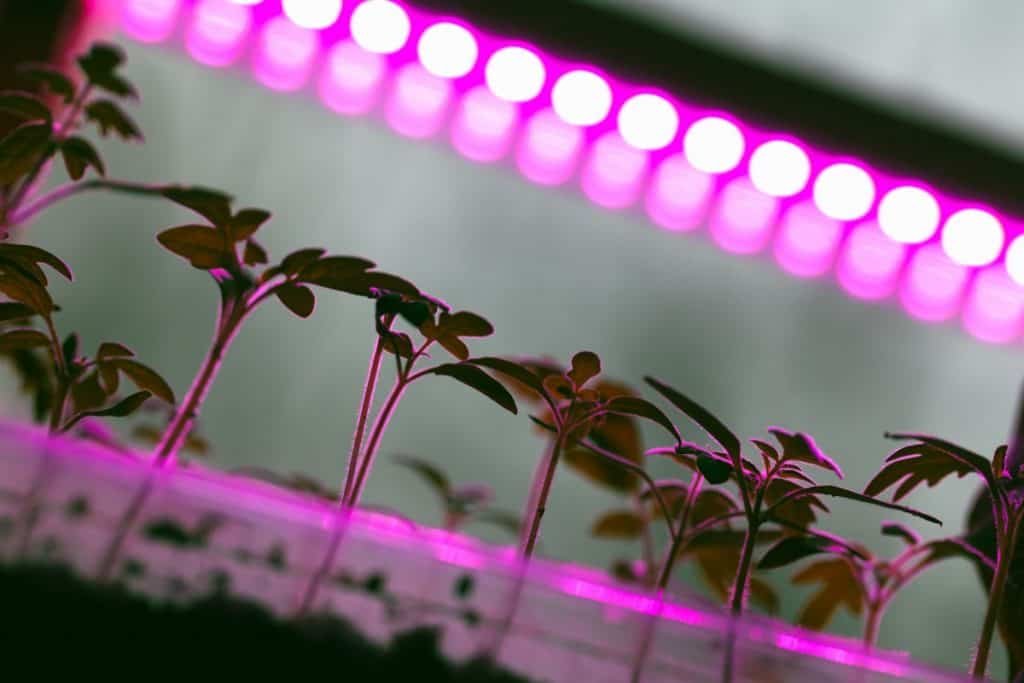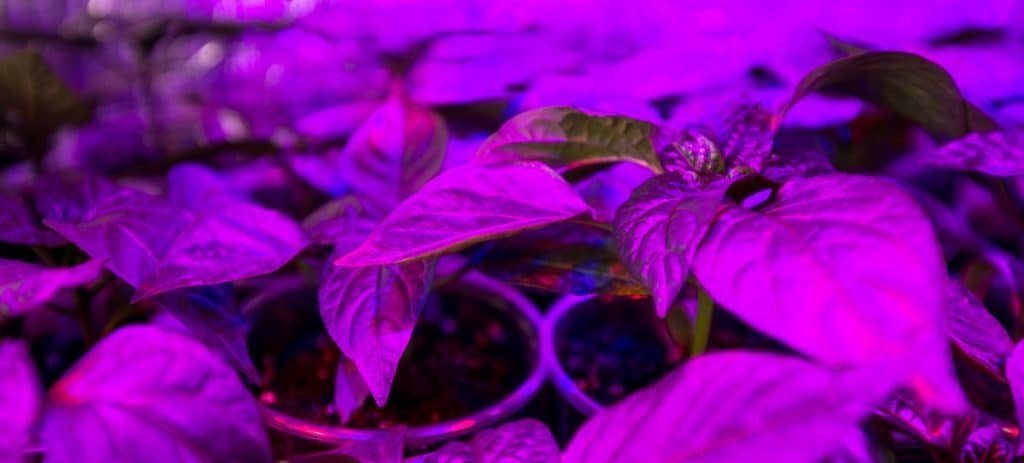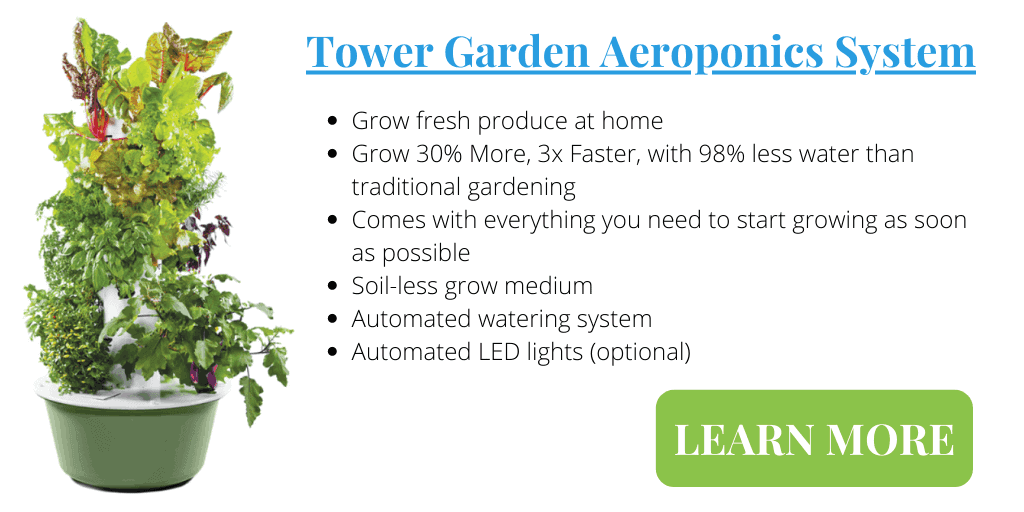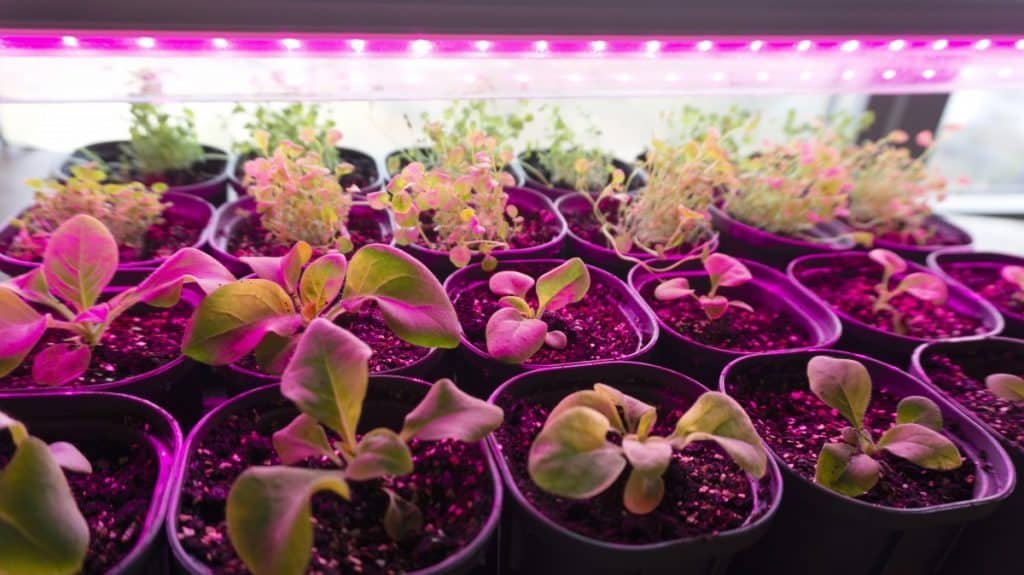Purple grow lights are becoming popular with many indoor growers as a result of new advancements and technology. Increased demand caused manufacturers begin experimenting with different types of grow lighting in order to meet specific indoor growing needs. So why are some of these new grow lights purple?
Purple is a combination of the red and blue light spectra that are the most used light colors in the growth and development of indoor grown plants. When they are combined, they produce a more energetic light than the red and blue lights individually. This energy benefits the plant growth.
As research into indoor plant growing progressed and discoveries were made about which light spectrums benefited the plants the most, one innovation was to add purple light into some fixtures for grow lights. To answer why some manufacturers make purple grow lights, we’ll need to take a look at how they benefit plants and what types of plants do best under these conditions.

What Is Special About Purple Grow Lights?
One of the first types of grow lights to be developed were metal halide lights, which are primarily used for flowering. These grow lights emit a bluish-white light and have an almost instant start time. However, they also produce significant amounts of heat, so ventilation is needed in order to keep plants from being scorched or causing fires.
The first purple grow lights that were produced were of the metal halide variety, but they were relatively expensive, and the heat production of the lights was not ideal.
These types of grow lights emit a higher level of lumens than the more traditional incandescent bulbs, and as such, they are often used in greenhouses or indoor grow rooms where large plants need specialized lighting to flourish. The addition of violet hues helps promote healthy plant growth by increasing photosynthetic activity.
The heat factor of the metal halide lights is often an undesirable aspect of these lights, which led to the development of purple LED grow lights.
But what is significant about the color purple for growing plants indoors? To answer this, we need to take a look at the color spectrum that is most beneficial to plants.

Grow Light Purple Spectrum
Research has shown that the red and blue light spectrums are the two spectra that offer the most benefit to plant growth and flower and fruit development in an indoor growing environment.
The color purple is achieved by mixing red and blue light, which are the two main parts of the white light spectrum that the plants need the most. The ratio of red to blue light in the purple color can be adjusted to cater to plants that require more blue light and plants that require more red light.
Generally, the average ratio of the red and blue spectrums that has the widest benefit for most plants is 80 to 85 percent red light and 15 to 20 percent blue light.
- Full Spectrum - Barrina LED grow light provides sufficient light for indoor plants, especially...
- Updated Plant Light Chips - Compare with other grow lights consisting of "blue chips" + "red...
- Reflector Design and Low Consumption - Consume only 252W with 1152 LEDs totally, replacing...
Purple LED Grow Lights
LEDs that produce blue and red light are also more energy-efficient users of electrical energy, which saves the grower on electrical running costs for their grow room. Thus, it also made sense for manufacturers to combine red and blue LEDs in one light fixture to produce a purple light that has the right mix of the two colors. This in very beneficial for the growing plants and safer to operate in your grow rooms or grow tents.
Red and blue LEDs are also one of the cheapest types of LEDs to manufacture, which helps to further cut costs for the grower, instead of using LEDs that produce white light and are more expensive to manufacture.
While white light is more optimal for plant growth, including some light in the infrared and ultraviolet spectrum, it is the increased cost of these lights that drives indoor growers to concentrate on the red and blue or purple-colored grow lights.
Some manufacturers include some white light diodes to further balance the purple light and enhance the overall effectiveness of their purple grow lights.
Some manufacturers have decided to produce LED lights that give the grower the most choice and have produced lights where the color that the light produces can be changed to suit the growing stage that the plants are in. Some of these lights are controlled by means of a remote control, but these lights tend to be quite expensive.
When growing at home it’s important to get the most efficiency out of your grow lights, grow space, and the time it takes to maintain it. With the Tower Garden vertical aeroponic growing system I grow 20+ plants in my home office maximizing the space and energy use of my LED light strips.
I spend a couple minutes a day picking fresh produce and top up the water once per week. You can get all the information by checking out What is a Tower Garden and How Does it Work?

When Should Purple Grow Lights Be Used?
Blue light affects chlorophyll production in plants and affects nutrient uptake. Red light stimulates the germination of seeds, growth of root systems, and the process of photosynthesis which allows the plant to convert nutrients into chemicals that it can use for food. Red light also stimulates the flowering and fruiting of plants.
Plants generally need more red light than blue light, so you need to make sure that the ratio of red and blue in your purple lights is appropriate to the development stage of your plants and also how you want your plants to grow.
Purple light is most beneficial during the vegetative cycle of plant growth, where the plant is an adolescent and producing stems and leaves since purple light is generally more energetic than red or blue lights on its own.
Plants that have evolved to grow in locations where there are fewer daylight hours or in low light conditions would benefit from a purple light that has a higher blue light component to it. Plants that prefer longer daylight hours would benefit from a purple light that has a higher red light component and a lower blue light component.
Plants that are exposed to light with a higher blue light ratio will have a smaller and more compact growth, which helps to keep plants smaller for growing in a smaller environment. You will, however, have to increase the red light ratio when it is time for the plant to flower and bear fruit.
When germinating seeds, the most beneficial purple light would be one that has a higher red light component to it.

Which Plants Grow Well Under Purple Grow Lights?
Because purple light is a mixture of blue and red light, plants that flower and fruit do better under purple lights than plants that only produce leafy crops.
These plants include plants such as tomatoes, beans, and peas. Some other examples are cucumbers, squash, eggplants, and peppers because these plants require long days with plenty of sun to produce the size and quality of fruit most people want to eat.
Most indoor plant growers will not stick to one color of light throughout the growing cycle of the plant unless the light provided is a full spectrum light.
Most growers will change the colors of the lights and the ratio of the colors depending on the stage of development that the plant is at.
As a result, most indoor plant grow rooms will have a range of different colored lights that the grower will use at different times.
Many indoor growers believe that the additional energy of the purple light results in the plants having more vibrant colors and producing fruit and vegetables with enhanced taste and flavor. It is also thought that plants exposed to purple light have an elevated amount of antioxidants, which is beneficial to humans.
Conclusion
There are many variations to the colors of grow lights, from red to blue and white and purple. The combination of colors that you use will largely be determined by the types of plants that you grow.
However, you will probably find that as you progress as an indoor grower, you will use a selection of light colors on different plants and at different stages of the plant’s growth.
Experienced indoor plant growers have worked out a combination of light colors, temperature, and humidity that work well in their local climate and for the plants that they produce.
With a little practice and experimentation, you will also get to the point of establishing your preference. A purple grow light is a good place to start because it will give you a mix of the two light spectra that the plants require the most of.

